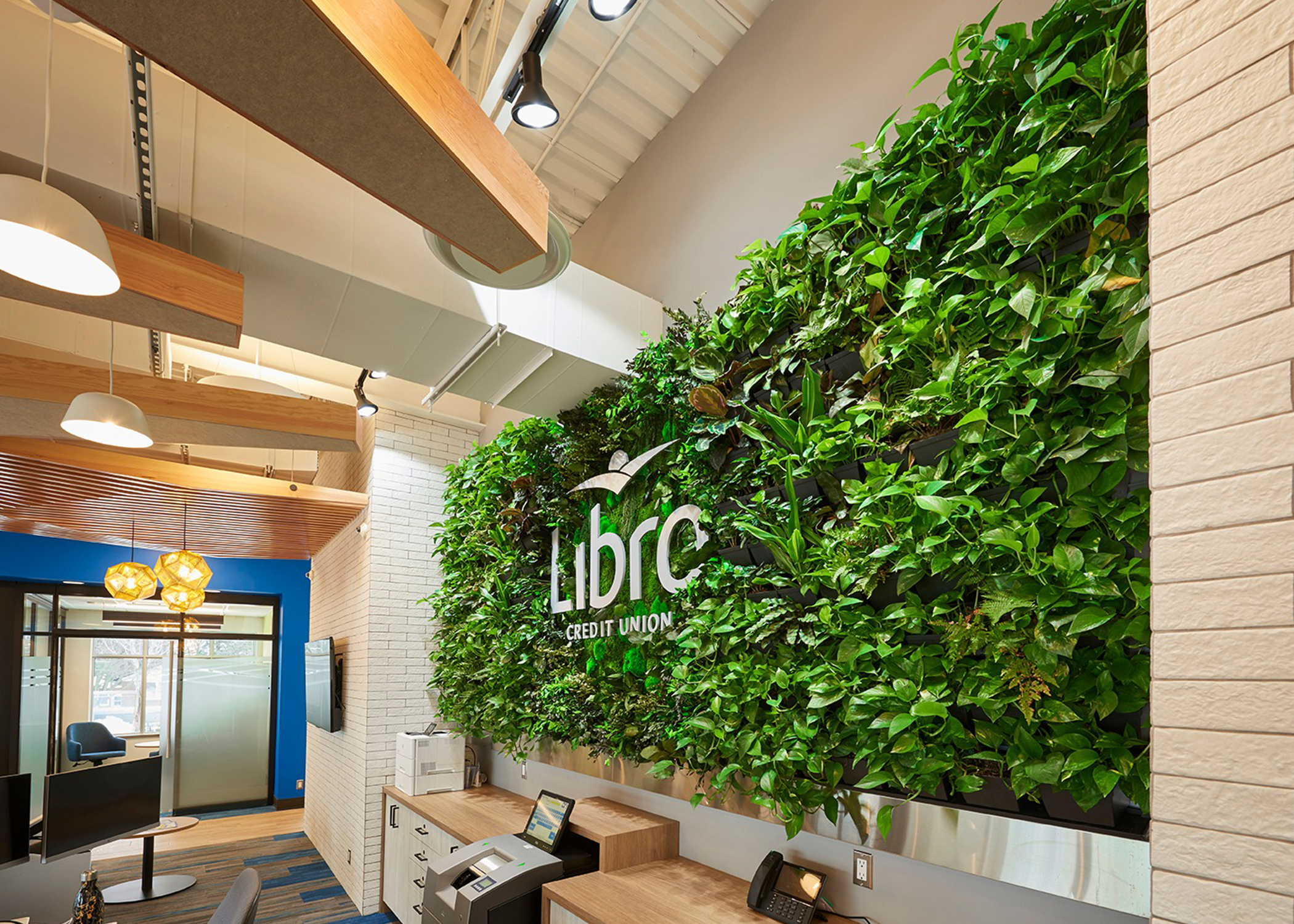Workplace expectations have evolved rapidly in recent years and the importance of employee wellness in office design has never been more critical. As businesses innovate to stay competitive, the focus on creating health-centric workspaces has intensified. Leaders are recognizing the profound impact of the physical environment on employee well-being and productivity.
Modern office designs now prioritize elements that promote physical and mental health. A well-designed space not only enhances employee satisfaction, but also plays a pivotal role in recruiting and retaining top talent. By fostering a healthier and more engaging work environment, companies can attract the best candidates and ensure long-term employee retention, driving overall success and innovation.

A Focus on Wellness-Oriented Design
Wellness-oriented office design prioritizes the health and well-being of employees by integrating ergonomic furniture, biophilic elements, high-quality air and lighting, and activity-based work areas. This design philosophy creates an environment conducive to both physical and mental health, enhancing employee morale, reducing stress, and boosting productivity. For employers, wellness-centric designs lead to lower absenteeism, higher retention rates, and a more engaged workforce, driving business success.
See how NewGround implemented a focus on wellness and collaboration at CFG Bank.
Ergonomics and Promoting Physical Health
Ergonomic design is a cornerstone of wellness-oriented offices. Essential components like adjustable seating, sit-stand desks, and monitor stands help reduce physical strain and prevent injuries. Ergonomic solutions, such as chairs with lumbar support and desks that accommodate both sitting and standing, ensure that workspaces adapt to the needs of each employee, promoting comfort and reducing the risk of musculoskeletal issues.
The Integration of Natural Elements
Biophilic design, which integrates natural elements into the built environment, is a powerful tool for enhancing mental health and productivity. Incorporating plants, maximizing natural light, and using organic materials can significantly boost employee satisfaction. Practical ways to implement biophilic design include installing living walls, creating green roofs, and placing plants throughout the office. These elements help connect employees with nature, reducing stress and increasing overall well-being.
Acknowledge and Prioritize Mental Health
Designing spaces that prioritize mental health is crucial in modern office design. Private areas for relaxation and quiet focus, along with amenities like meditation rooms, quiet nooks, and gyms, support mental well-being. A welcoming design that fosters a calming and aesthetically pleasing environment can make a significant difference in how employees feel about their workplace, fostering a positive and productive atmosphere.

Fresh Air, Comfortable Lighting and Thoughtful Sound Management
The quality of air and light in the workplace directly impacts health and productivity. Poor air quality can lead to health issues and decreased efficiency, making air purification systems and proper ventilation essential. Similarly, natural light and high-quality artificial lighting that mimics natural light patterns are crucial for maintaining circadian rhythms and reducing eye strain. Optimizing these elements can enhance overall workplace wellness.
Just like air and lighting, the sound environment is shared among employees (unless you’ve got your AirPods in). Managing noise pollution is critical in creating a tranquil and stress-free work environment. Acoustic design strategies, such as using sound-absorbing panels and strategically placing plants, can significantly reduce noise levels. A quieter environment helps reduce stress and enhances focus, leading to better performance and job satisfaction among employees.
Multifunctional Spaces and Collaboration Stations
Multifunctional spaces that support both work and relaxation can help promote a balanced work environment. These spaces can be adapted to accommodate team meetings, client activities, or daily use for breakout groups. Such spaces provide employees with opportunities to rejuvenate and relax or work in larger groups without office distractions. Collaborative spaces also play a vital role in building social connections and fostering innovation, contributing to a dynamic and engaging workplace culture.
Implement Wellness-Centric Design with Buy-In
To create effective wellness-oriented spaces, it is essential to involve employees in the design process through surveys or workshops. This ensures that the design meets their needs and preferences. Consulting with professionals who specialize in ergonomic and biophilic design can help achieve health and wellness standards. Continuous evaluation and improvement based on employee feedback are crucial for maintaining a space that supports their well-being and productivity.
Sustainability and Employee Well-being
Sustainability features in office design are closely linked to employee well-being. Green spaces, ample natural light, and flexible furnishings not only reduce the environmental footprint but also create a healthier work environment. Sustainable design elements promote a sense of purpose and responsibility, contributing to the overall well-being of employees and aligning with the values of many modern businesses.
Design for Wellness = Design for People
Prioritizing employee wellness in office design is not just beneficial—it is essential for creating a thriving workplace. By integrating ergonomic furniture, natural elements, high-quality air and lighting, and multifunctional spaces, businesses can enhance employee satisfaction and productivity. Investing in wellness-centric office spaces is a strategic move that pays off in the long run, fostering a healthy, happy, and productive workforce.
As businesses navigate the future of work, investing in wellness-centric office design is a critical step toward enhancing employee satisfaction and productivity. By prioritizing health and well-being in the workplace, companies can create an environment where employees thrive, leading to greater business success. It’s time to rethink your office design—start today and transform your workspace into a health-centric haven that supports and inspires your team.